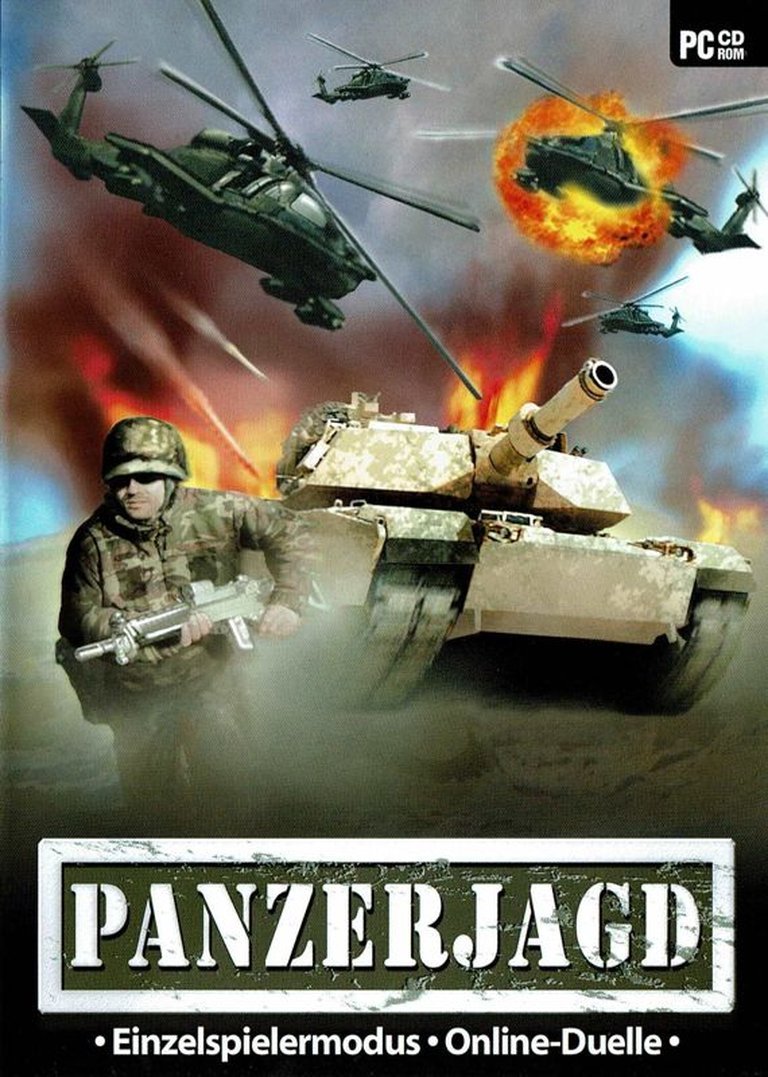- Release Year: 2006
- Platforms: Windows
- Publisher: media Verlagsgesellschaft mbH
- Developer: TASK four
- Genre: Strategy, Tactics
- Perspective: Top-down
- Game Mode: Hotseat, Single-player
- Gameplay: Resource Management, Turn-based combat
- Setting: War

Description
Panzerjagd is a turn-based strategy game inspired by Battleship, where players deploy tanks, helicopters, and jets on a grid-based battlefield. The objective is to strategically guess and destroy the opponent’s units across 24 single-player maps and a six-mission campaign, offering a tactical war experience.
Panzerjagd Cracks & Fixes
Panzerjagd Guides & Walkthroughs
Panzerjagd Cheats & Codes
PC
| Code | Effect |
|---|---|
| WASSERLOCH | Unlocks Sabotage mission |
| SABOTEUR | Unlocks Bridgehead mission |
| KAMPFSTOFF | Unlocks Minefield mission |
| SIRENE | Unlocks Enemy Offensive mission |
| DESASTER | Unlocks Firebird mission |
Panzerjagd: Review
Introduction
Panzerjagd is a turn-based strategy game that puts a military spin on the classic Battleship gameplay. Released in 2006 for Windows by TASK four and media Verlagsgesellschaft mbH, this game pits players against each other or the AI in a battle to locate and destroy enemy units spread across a grid-based battlefield. With its blend of familiar mechanics and military themes, Panzerjagd offers both nostalgia and fresh strategic opportunities.
Development History & Context
Panzerjagd was developed by a small team at TASK four, led by project lead Haiko Ruttmann, programmer Karsten Koch, and designer Stefan Richter. The game was published by media Verlagsgesellschaft mbH and released in June 2006. At the time, the indie game market was beginning to flourish, with developers exploring new distribution channels and creative freedoms. Panzerjagd fits into this context as a niche product targeting strategy gamers with a military interest.
The game’s development likely leveraged the team’s experience from previous projects like Zootrix and Kreuzzüge, which may have informed the turn-based and grid-based design. The result is a polished experience that builds upon the established Battleship formula while adding military units and scenarios.
Narrative & Thematic Deep Dive
The narrative of Panzerjagd is straightforward, drawing inspiration from military conflict scenarios. Players control either a German or Allied force, spreading various units (ships, tanks, helicopters, jets) across the game grid. The goal is to destroy all enemy units by guessing their coordinates. The military theme adds a layer of realism and immersion, with unit types reflecting real-world counterparts and maps designed to mimic battlefields.
The game’s premise is simple yet effective, allowing players to engage in the core mechanic without a complex backstory. The theme of tank hunting (as the title suggests) adds a specific focus that differentiates it from generic Battleship variants.
Gameplay Mechanics & Systems
At its core, Panzerjagd follows the Battleship formula: two players take turns guessing coordinates to attack enemy units. However, several innovations and enhancements set it apart:
-
Unit Variety: Instead of just ships, players can deploy ten different unit types including tanks, jets, helicopters, and ships. Each unit has distinct attributes (size, hit points) that affect gameplay.
-
Single-Player Content: The game includes 24 single-player maps and a six-mission campaign, providing structured challenges beyond the classic two-player format.
-
Campaign Mode: The campaign mode offers a narrative arc with escalating difficulty, allowing players to experience a longer storyline.
-
Grid and Units: The grid size and unit placement rules add depth. Units may have different sizes, requiring more precise guesses to hit them.
-
Feedback and Visuals: When a unit is hit, the game provides immediate feedback through animations and updated grid markers, enhancing the tactile feel of the gameplay.
However, the game also has potential flaws. The turn-based guessing can become repetitive, and the lack of unit movement between turns (unlike some real-time strategy games) may limit the dynamic aspect of the battles. Additionally, the AI in single-player modes might not provide a challenging opponent if the unit placement is too predictable.
World-Building, Art & Sound
Panzerjagd features a top-down perspective with a grid-based game map, typical of Battleship-style games. The art style is functional, focusing on clear representation of units and the battlefield. The military theme is reflected in the unit designs, which range from tanks and jets to ships and helicopters.
The color palette is designed to differentiate between the player’s units and the enemy’s, with enemy units often appearing in shades of green or blue. The grid is clearly marked, allowing players to input coordinates accurately.
Sound effects are basic but effective, with audible cues for hits, misses, and unit destruction. Background music is minimal, allowing players to focus on the strategic aspects without distraction.
Reception & Legacy
Reception for Panzerjagd at launch was limited, with no critic reviews listed on MobyGames and no player reviews available. The game’s niche appeal and indie status likely restricted its commercial success. However, for those who enjoy Battleship-style games with added depth, Panzerjagd has a dedicated following.
In terms of legacy, Panzerjagd contributes to the genre of grid-based strategy games, joining titles like SeaWolves, Submarine Commander, and others. Its introduction of multiple unit types and military themes may have influenced later games in the genre, though the core mechanics remain rooted in Battleship.
Conclusion
Panzerjagd is a solid entry in the Battleship genre, offering familiar gameplay with military flair and expanded unit options. While it may not revolutionize the genre, it provides a satisfying experience for strategy and military game enthusiasts. With its 24 single-player maps and six-mission campaign, it offers good value for players seeking both competitive multiplayer and single-player challenges.